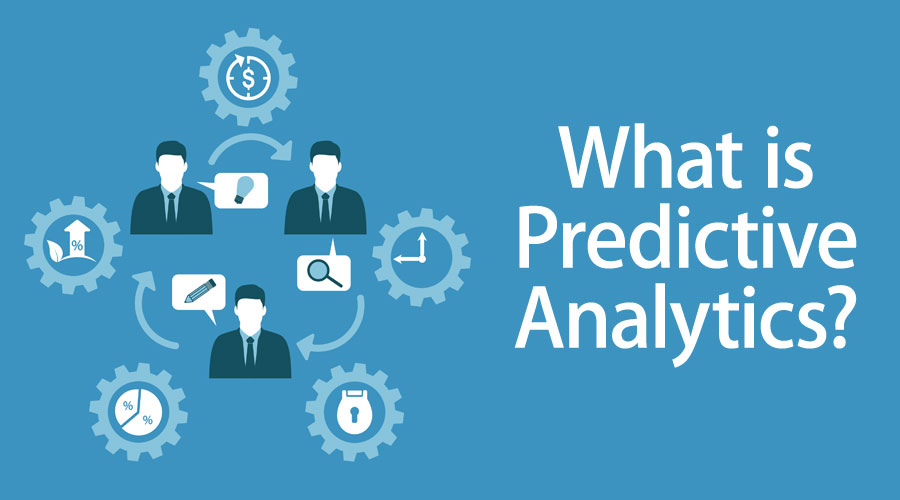Updated May 18, 2023
Introduction to Predictive Analytics
The following article provides an outline for What is Predictive Analytics? The predictive analysis includes statistical techniques such as data mining, predictive modeling, and machine learning. All these techniques interpret historical and present situations so that future analyses can be made about the data. This creates predictions about the data for future or other unknown events. Using historical data, mathematical trends can be made to understand data. Examples include health, retail, weather, insurance, and risk assessment. This analysis makes useful information from the data and helps the business grow.
Understanding Predictive Analytics
Let us take an example of a certain organization that wants to know what its profit will be after a few years in the business, given the current trends in sales, the customer base in different locations, etc. Predictive analytics will use the variables given, and techniques such as data mining and artificial intelligence will predict the future profit or any other factor the organization is interested in.
How does this Make Working so Easy?
Businesses use predictive analytics in business analysis to optimize marketing campaigns and improve operations. It helps forecast future outcomes and reduces risks by leveraging interactive and user-friendly software. Moreover, it makes the working of the organizations easier by giving them the foresight to calculate the risks and make decisions to avoid them.
What can you do with Predictive Analytics?
It provides the easy use of the tools used for analysis as they are easily accessible by business analysts. It provides a different approach other than data mining by providing faster analysis and more importance to prediction than data description. It transforms the raw data to provide more information and insights.
Working with Predictive Analytics
Predictive analytics consists of advanced analytics and decision optimization. Advanced analytics is studying data from the past to project future actions related to specific issues of the organization. It utilizes statistical, mathematical, and complex algorithms to analyze the data and derive insights. These insights are then used to determine the actions required to achieve optimal results.
The system or analysts receive the derived actions and necessary information for implementation. It improves decision-making by measuring uncertainties, which enables proactive risk management. By using predictive analytics in operation systems, organizations can achieve cost reduction, process improvement, and revenue increase.
Advantages of Predictive Analytics
Given below are the advantages mentioned:
- Risk Reduction: The insurance and Finance industry uses predictive analysis to reduce risk by making sensible and effective decisions by validating a person or business based on the available data.
- Fraud Detection: Predictive analysis can track changes in the behavior patterns within a network or site by detecting anomalies that might indicate fraud or threat.
- Competitive Advantage: Predictive Analytics provides insight into valuable information like customer data to gain an advantage over competitors.
- Efficiency in Production: Industries like production and manufacturing can forecast inventory, production rates, and potential failures.
Required Analytics Skills
Predictive analysis requires a proactive mindset to think about the outcomes. Therefore, understanding the basics of popular predictive techniques, such as regression or decision trees, will be immensely useful. Another skill that comes into the picture is thinking critically about variables, i.e., understanding the attributes, interpreting results, and validating models. Apart from all the above, understanding the tools and techniques used in the process is also helpful.
Why Should We Use Predictive Analytics?
It analyzes a huge volume of data to show many key points in a business, which helps the organization understand its areas of strength and weakness. It helps identify future patterns, which can be very useful for an organization in understanding customer needs better, improving their marketing, etc. In a competitive and complex environment, it simplifies the tasks by providing automation, such as keeping two different teams in sync by notifying each other about the status of the other.
Predictive Analytics Scope
Predictive Analytics can work effectively in minimizing many issues faced regularly. For example, a predictive model can efficiently provide an individual’s biometrics for identification in anti-theft maintenance. It can provide alternatives in predicting the best routes to resolve traffic issues. Also, it can suggest new hotels or restaurants through a recommendation system by studying the past preferences of a customer.
Why do we Need Predictive Analytics?
It evaluates past data and enables us to learn from past experiences, recognize patterns and trends, and project unforeseeable future possibilities. It takes the decision-making ahead of reporting valuable insights by providing scores designed specifically to suggest actions.
Who is the Right Audience for Learning these Technologies?
Predictive analytics is used in Marketing and Advertising to predict the patterns in data to achieve many organizational goals. It is important for Business and Data Analysts who are directly involved with the above industries to understand and apply this technique.
How will this Technology help you in Career Growth?
With the emerging Big Data, where data grows every second, the need to analyze it increases more than ever. Organizations are rapidly moving towards collecting a huge volume of data to predict patterns in data for their growth. So with predictive analytics, one will surely have very good career growth.
Conclusion
Predictive Analytics is recommendable for its advantages for organizations vitally dependent on analyzing the huge volume of data. Organizations can go ahead with it to achieve their goals and generate more revenue on the insights provided by this technique.
Recommended Articles
This has been a guide to What is Predictive Analytics? Here we discussed predictive analytics’s working, scope, advantages, and how it can help in career growth. You can also go through our other suggested articles to learn more –




